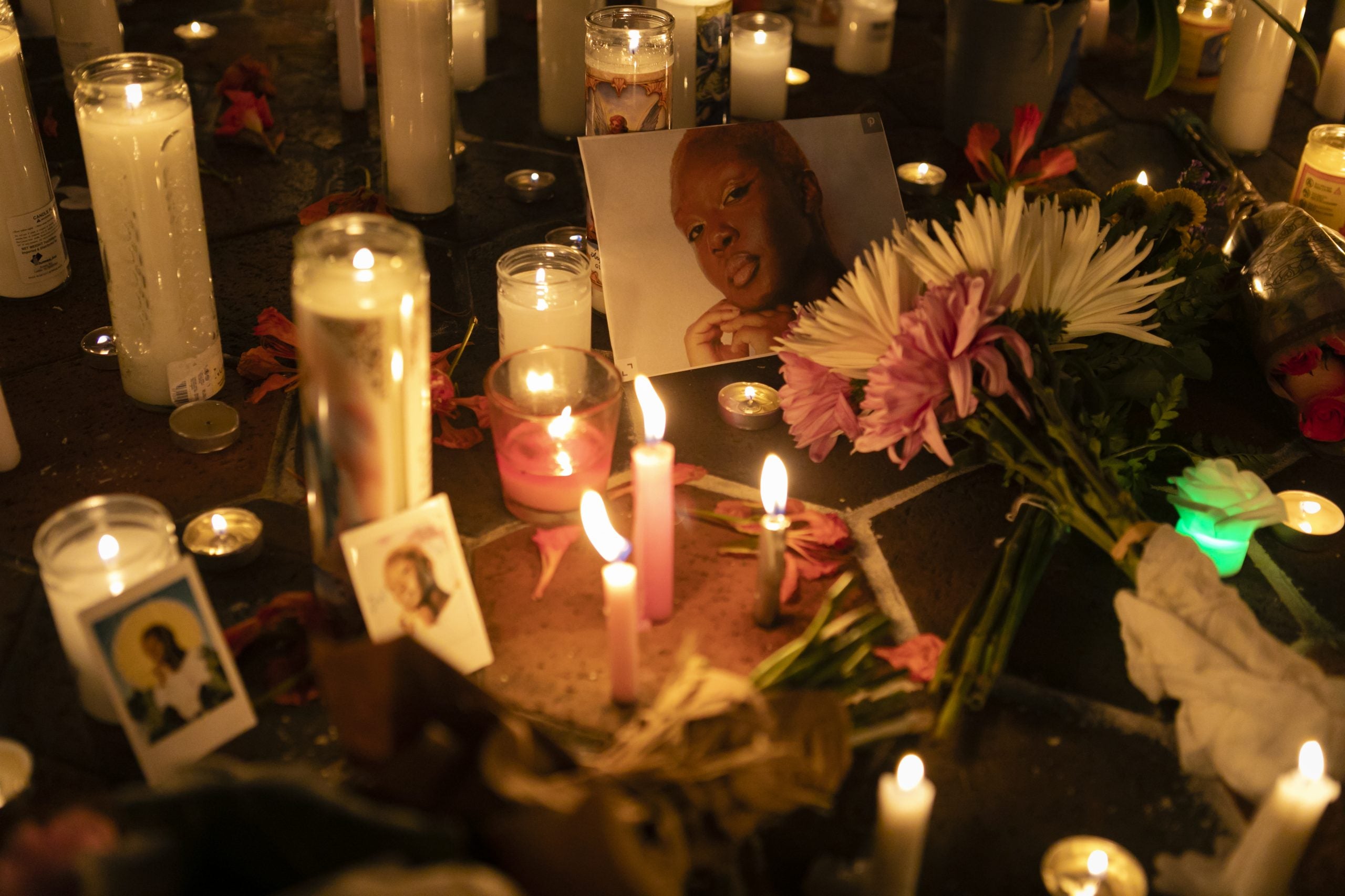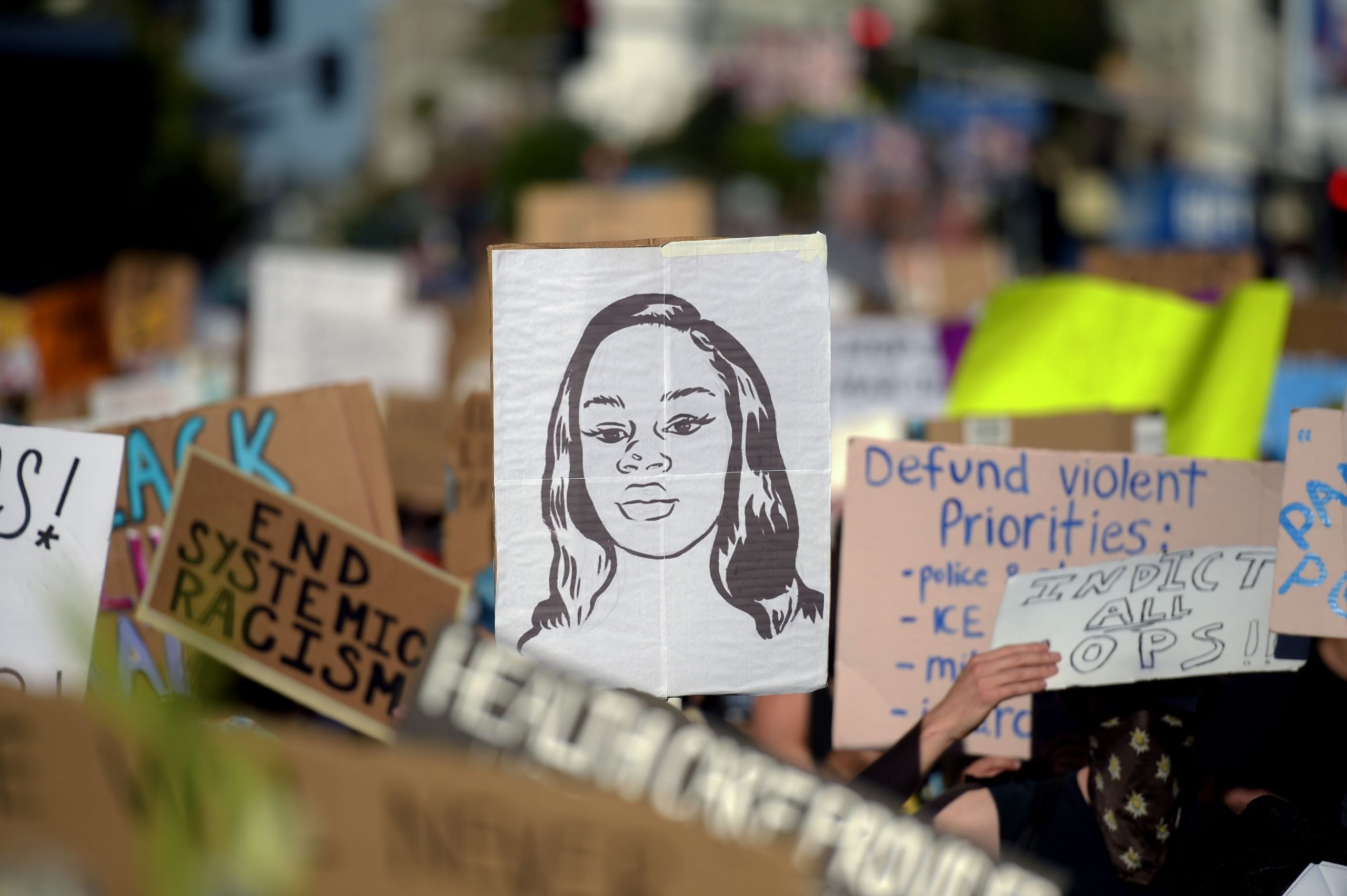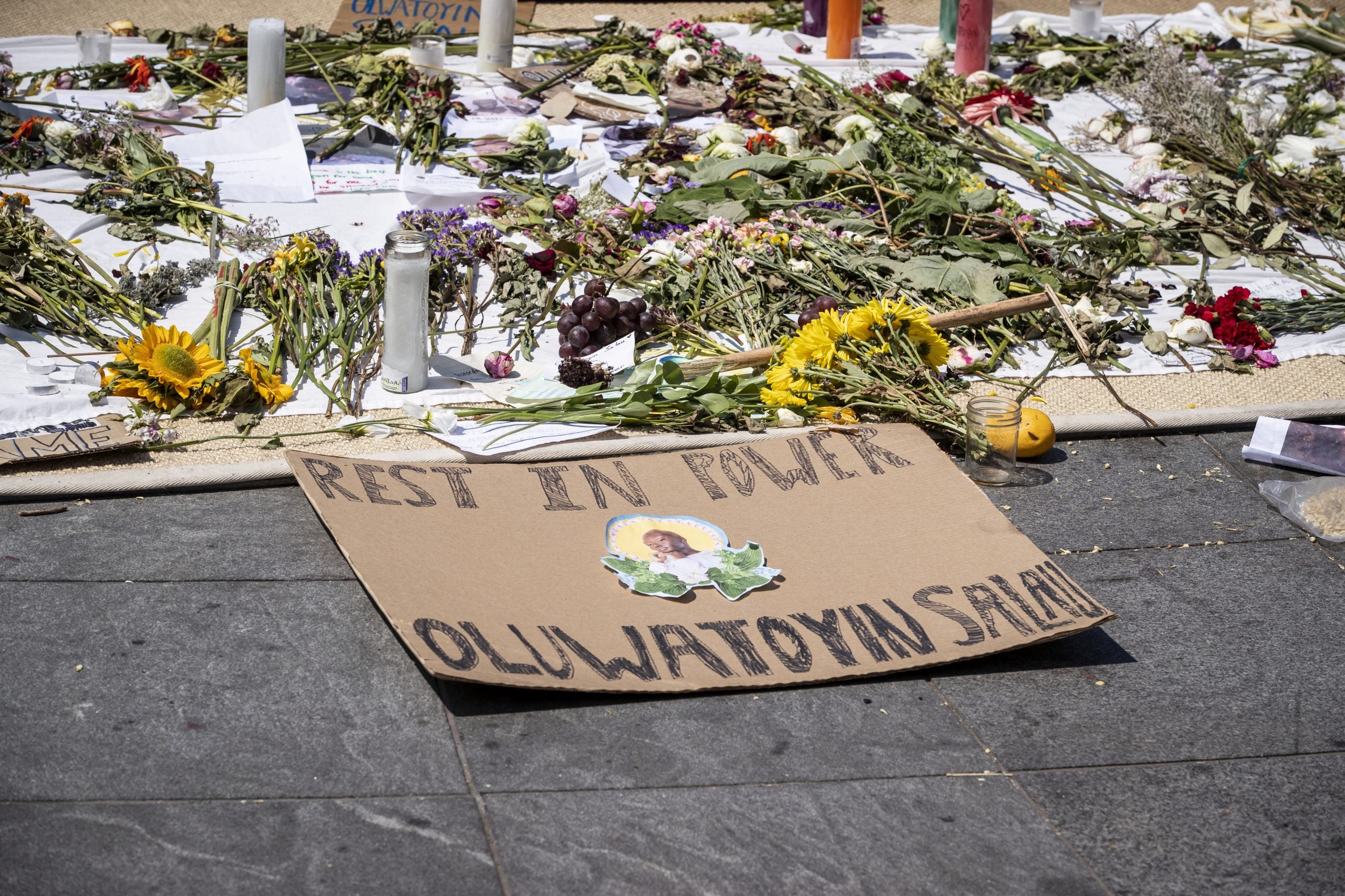Oluwatoyin “Toyin” Salau was a warrior for justice. The 19-year-old, full of life, was fueled by the pursuit of a better world for all Black lives—across gender, sexuality, ethnicity and class. Salau marched in the streets, armed with a stirring voice and a vision for justice, while facing down an uncontrolled pandemic and a largely unregulated battalion of cops.
Speaking at a Tallahassee #BlackLivesMatter protest just days before her disappearance she said, “Y’all need to remember who the enemy is. It’s White, racist Tallahassee.”
In the end, she did indeed give her life. But the enemy was far closer to home.
On June 6, Salau met Aaron Glee, Jr., a 49-year-old Black man, at a bus stop. Over the course of an hour, Glee later said, Salau confided in him that she’d been sexually assaulted days before. She had, it seemed, nowhere to go, so she accepted his offer to shelter at his place. She had, perhaps, no reason to fear: Glee was neither the White Tallahassee-ian hell-bent on the maintenance of White supremacy nor was he the viral pathogen that is taking the lives of thousands of Black people across the country. With those threats held at bay in those moments behind the battle lines, there was, possibly, an illusion of safety. One can imagine that somewhere in that hour-long talk, she shared her passion for what held them together—the value of their Black lives. That familiarity, bred out of a struggle to thrive in a world bent on surveillance and punishment, covered the fact that they were, in fact, strangers to each other. Perhaps in his gaze upon her she saw empathy, camaraderie, even family. Perhaps she saw in him the embodiment of Black life that is most at risk—a life for which she was risking hers to save.
It may never be fully known how Glee won over the teen’s trust. What is known is that after Salau showered, the Good Samaritan changed into something as deadly as the murderous COVID-19 virus and the casual executioners who kill with a badge. By his own confession, Glee overpowered Salau, bound her and over the course of days, sexually assaulted her repeatedly. In the end, thinking that his best chance at freedom was her death, he brutally strangled her. At some point, either before he killed Salau, or after, he took another woman’s life—Victoria Sims—leaving both bodies to be discovered on June 13.

Like Breonna Taylor’s, Salau’s loss of life is in danger of becoming an exceptional story of the dangers facing young Black women. But her story is not exceptional because her life was snuffed out just as she was arriving at adulthood. Too many young Black women face this tragic fate for Salau’s to be seen as exceptional. If her name goes on to symbolize the intolerable conditions under which she lived, it will be an exception to the obscurity under which too many Black women die.
And that exception will be due to pure happenstance: The fact that during this moment of reckoning with police violence an activist who raised her voice to defend Black lives lost her own.
The untimely end to Salau’s young life reflects a discomfiting story that many would like to turn away from, a story that is all too common among young Black women. According to the National Center on Violence Against Women in the Black Community, one in four Black girls will be sexually abused and 40 to 60 percent report being subjected to coercive sexual contact by the age of 18. Other data reveals that Black women were two and a half times more likely to be murdered by men than their White counterparts and more likely than most other homicide victims to know their killers. In fact, more than nine in ten Black female victims knew their killers.

One of the most galvanizing dimensions of Breonna Taylor’s death was the fact that she was killed by police in her own home, in a place that was supposed to be safe, a respite from the dangers of navigating a racist and sexist society as both a Black person and a woman. But the data tells us that the dangers young Black women face extend to our most intimate spaces, to the unimaginable but very real possibility that the person who might take your life is the one whose life you have spent the last days of your own defending.
The precarity of Black girls’ lives is in fact buried beneath myths, stereotypes and denial. Myths frame anti-Black racism as barely touching Black girls, and when it does, it is as collateral damage in pursuit of racism’s real targets: Black men and boys. The intra-racial victimization that they face at the hands of Black men cancels out the particular dimensions of racial misogyny that place them at risk. Stereotypes abound to blame Black girls for their own victimization, presenting them as adultified and consequently, fair game for the peculiar forms of “misogynoir” forged at the crucible of racism and sexism. Denial seals the coffin into which too many Black girls’ lives are buried, snuffed out by sexual abuse that opportunistically settles in wherever the obligation to maintain family secrets is greater than the obligation not to harm our children.
Every year, thousands of Black girls who run away, are taken away or are thrown away wind up with men who, like Glee, promise safety and security, only to find exploitation, abuse and death. National data show Black girls are disproportionately trafficked—making up to 40 percent of girls who are bartered and sold. The fates of some of the disappeared Black girls are known, like Salau or Angelia Ella Mangum and Tjhisha Monique Ball who were found bound, gagged and murdered also in Florida, where her body was tossed. Yet many more are disappeared, never to become household names like White girls whose fates have launched high-profile investigations and vigils.
Black girls’ lives are buried, snuffed out by sexual abuse that opportunistically settles in wherever the obligation to maintain family secrets is greater than the obligation not to harm our children.
Salau’s death is one of many, the tip of a reality that floats beneath the surface of consciousness about the precarity of Black girlhood. Her story should, like Breonna Taylor’s, be told in every space it can, to open up the unspoken ways that we sacrifice lives like hers to maintain the asymmetric solidarities that drive us to denounce only the forms of racism we stand ready to recognize and externalize. Her story should be told every time we lose the capacity to rehearse the toxic interface of racism and misogyny; it should be part of the roll call of Black women, girls and femmes who stand similarly at risk of losing our lives, and having our lost lives be erased. Her name should stand in for the imperative that Black Girls Matter. Like the movement that spawned this moment, Black Girls Matter is an aspiration that does not yet capture the societal reality in which we live. It can, however, become the low-hanging fruit that we can reach by refusing to silence their stories. Telling them repeatedly, without deflection, ensures that Black girls and the women do, in fact, matter to us. We can start by telling her story, and those of so many others we have sacrificed on the altar of unrequited solidarity.

